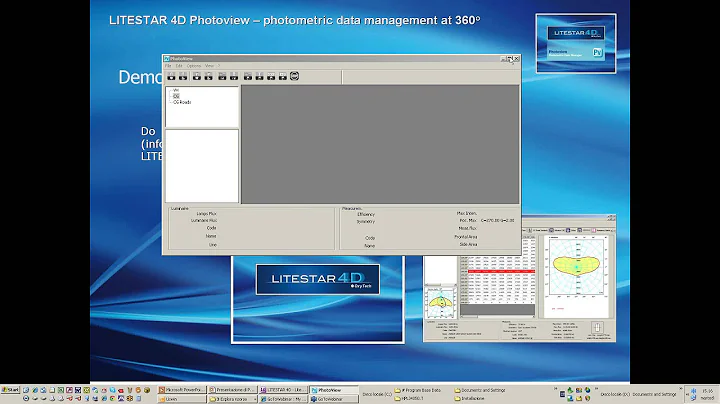Unlock the Power of the Curtis 1313 Handheld Programmer
Table of Contents
- Introduction
- Overview of the Curtis 1313 Handheld Programmer
- Importance of Proper Programming
- Basics of Operating the Handheld Programmer
- Connecting the Programmer
- Powering up the Programmer
- Main Menu Navigation
- Key Functions of the Programmer
- Saving Favorites and Taking Screenshots
- Display Format Explained
- Conclusion
Introduction
In this article, we will explore the functionalities and operations of the Curtis 1313 Handheld Programmer. This device is used to configure Curtis motor control systems and allows users to adjust and save parameter settings, monitor real-time data, and perform diagnostics and troubleshooting. It is important to note that improper programming of the control system can have significant implications on speed, acceleration, stability, and braking. Only authorized personnel should program the control system, ensuring safety and efficient operation. Let's delve into the various aspects of operating the Curtis 1313 Handheld Programmer.
Overview of the Curtis 1313 Handheld Programmer
The Curtis 1313 Handheld Programmer is a powerful tool designed to configure Curtis motor control systems. With this programmer, users can make necessary adjustments to parameter settings, monitor real-time data, and troubleshoot any issues that may arise. It offers a range of functionalities to ensure efficient and safe operation of the control system.
Importance of Proper Programming
Proper programming of the control system is crucial to maintain optimal performance and safety. Incorrect programming or operating outside of safe limits can lead to hazardous situations. It is essential to rely on the expertise of the vehicle manufacturer or authorized service agent for programming the control system. This ensures that the system operates within prescribed limits and guarantees the safety of the vehicle and its occupants.
Basics of Operating the Handheld Programmer
To operate the handheld programmer, it is important to understand the various connections and features it offers. The Curtis 1313 Handheld Programmer has two connectors - one for communicating with the Curtis motor controller and another for interfacing with a PC. The system connector port is used to connect the programmer to the Curtis motor controller using the supplied cable. The USB connector port, on the other hand, is utilized with a USB cable to connect the programmer to a PC.
The handheld programmer also comes with an internal memory of 64 megabytes for storing files and programs. For additional memory, users can insert a standard SD card, similar to those used in cameras. It is important to note that the SD card must be inserted into the programmer facedown to function properly.
Connecting the Programmer
To begin using the Curtis 1313 Handheld Programmer, it must be properly connected to the Curtis motor controller or a PC. Using the supplied cable, connect the system connector port on the programmer to the corresponding port on the motor controller. Ensure a secure connection to enable smooth communication between the devices.
For interfacing with a PC, use a USB cable to connect the USB connector port on the handheld programmer to the PC. This connection allows for efficient data transfer and system configuration. Prior to connecting the programmer, ensure that the PC has the necessary drivers installed for seamless communication between the devices.
Powering up the Programmer
To power on the Curtis 1313 Handheld Programmer, insert two double-A batteries into the battery compartment located on the underside of the unit. Once the batteries are inserted, the programmer will automatically turn on and display an information upload screen. This screen indicates that the programmer is obtaining information from the controller.
Once the programmer has successfully uploaded the controller information, it will display the main menu. The main menu serves as the central hub for accessing various functions and settings of the handheld programmer. To power off the programmer, press and hold the power key for a few seconds. A prompt will appear asking whether you want to power off the programmer, with the choices "Yes" and "No" displayed as soft key options.
In the event that the programmer is turned off or has self-shut down due to inactivity, pressing the power key will power it back on. This ensures that users can quickly resume their tasks without any interruption.
Main Menu Navigation
The main menu of the Curtis 1313 Handheld Programmer allows easy access to the different menus and functions available. Using the directional arrow keys located on the programmer's keypad, users can highlight a specific menu. Once a menu is highlighted, pressing the select soft key will open the selected menu, providing access to its associated settings and options.
Additionally, the right arrow key within menus other than the main menu allows users to navigate forward, opening highlighted sub-menus or items. The combination of the arrow keys and the select soft key enables effortless navigation throughout the various menus and settings.
Key Functions of the Programmer
The Curtis 1313 Handheld Programmer offers a range of key functions that aid in the efficient operation of the device. Let's explore these key functions and their respective uses.
Soft Keys
The push-button keys on the programmer's keypad, referred to as soft keys, are designed to facilitate easy navigation through menus. While the three soft keys initially appear blank, their function changes depending on the context. The LCD screen directly above the soft keys displays the function associated with each key. Users can easily identify the relevant function and utilize the soft keys accordingly.
Directional Arrow Keys
Located on the programmer's keypad, the directional arrow keys (up, down, left, and right) provide users with the ability to navigate through menus. In the main menu, these arrow keys allow users to highlight specific menus. Once a menu is highlighted, the select soft key can be pressed to open the selected menu. Users can choose to navigate within the main menu using either the arrow keys or the main menu key, whichever they find more comfortable.
Plus and Minus Keys
The plus and minus keys on the handheld programmer enable users to increase or decrease the value of parameter settings. These keys are also used as "plus equals yes" and "minus equals no" buttons in certain contexts. They provide a convenient way to scroll through different options, such as selecting an access level or choosing a language.
Yellow Star
The yellow star key allows users to save their favorite settings or options. By accessing the favorites menu through the main menu or using the favorites key, users can quickly access their preferred configurations without the need for repetitive navigation.
Additionally, by pressing the power key followed by the favorite key, users can capture a screenshot of the LCD display. It is worth noting that this function requires an SD card to be installed into the 1313 handheld programmer.
Yellow Stack
The yellow stack key provides users with quick access to the main menu from any screen or menu within the handheld programmer. Pressing the yellow stack key ensures that users can easily return to the central hub of the programmer, enabling them to navigate to different menus effortlessly.
Yellow Question Mark
The yellow question mark key serves as the help button, providing users with context-specific help texts. By pressing the help key, users can access relevant information pertaining to the menu or setting they are currently exploring. The help text window can be closed by pressing the help key again, toggling the help function on and off.
Saving Favorites and Taking Screenshots
The Curtis 1313 Handheld Programmer offers the functionality to save favorite settings and options for quick access. By selecting the favorites icon in the main menu or using the favorites key, users can navigate to the favorites menu. This menu displays all previously saved favorites, allowing users to directly access their preferred configurations.
Furthermore, users have the ability to take screenshots of the LCD display using the power key and the favorite key combination. However, it is important to note that this function requires an SD card to be inserted into the handheld programmer to function correctly. By capturing screenshots, users can document important information or capture specific controller settings for review or future reference.
Display Format Explained
Understanding the display format of the Curtis 1313 Handheld Programmer is essential for efficient operation. The display features several indicators and soft key texts to assist users in performing actions and navigating through the menus.
The green circle on the display indicates a successful connection to the system, ensuring seamless communication between the programmer and the motor controller. On the other hand, a red slash indicates that no connection is established. These indicators provide users with real-time feedback on the communication status.
The soft key text line, located at the bottom of the display, suggests actions associated with the respective soft keys. By pressing the soft key displayed above, users can perform the suggested action or access the associated menu. Soft keys play a significant role in navigating through different options within menus and sub-menus.
Conclusion
In conclusion, the Curtis 1313 Handheld Programmer is a valuable tool for configuring Curtis motor control systems. By properly operating this programmer, users can adjust parameter settings, monitor real-time data, and troubleshoot any issues that may arise. It is essential to ensure the correct programming of the control system to maintain efficiency and safety. By following the guidelines outlined in this article and referencing the manual, users can achieve optimal performance of their Curtis motor control systems.
【Resources】
Highlights
- The Curtis 1313 Handheld Programmer is a powerful tool for configuring Curtis motor control systems.
- Proper programming is crucial to ensure safety and optimal performance.
- The programmer offers a range of key functions for easy operation.
- Navigation through menus is facilitated by directional arrow keys and soft keys.
- Saving favorites and taking screenshots provide convenience for users.
- Understanding the display format ensures efficient operation of the programmer.
FAQ
Q: Who should program the control system of the Curtis motor controller?
A: Only the vehicle manufacturer or authorized service agent/dealer should program the control system to ensure safety and adherence to prescribed limits.
Q: Can I increase the memory of the Curtis 1313 Handheld Programmer?
A: Yes, the programmer has an internal memory of 64 megabytes, which can be expanded with a standard SD card.
Q: How can I turn off the handheld programmer?
A: Press and hold the power key, and then select "Yes" to power off the programmer.
Q: Can I capture screenshots with the handheld programmer?
A: Yes, by pressing the power key followed by the favorite key, users can take screenshots of the LCD display. However, an SD card must be inserted into the programmer for this function to work.
Q: What does the green circle indicator on the display of the programmer signify?
A: The green circle indicates a successful connection to the system, ensuring smooth communication between the programmer and the motor controller.







